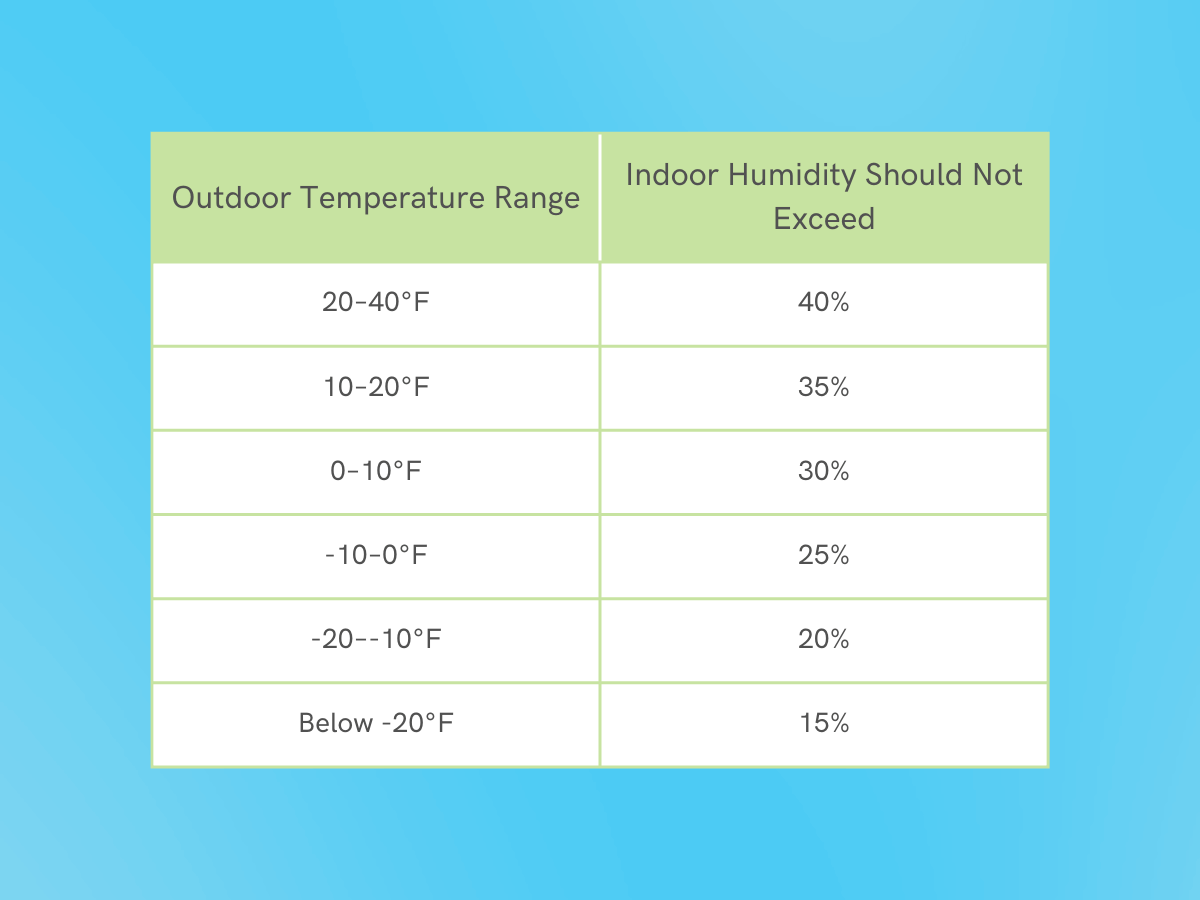The holidays are approaching quickly and so is the winter season! Each region of the United States experiences winters differently. Some states simply deal with a cool breeze and rain, others receive light to moderate snowfall and the rest are accustomed to severe storms. No matter the region, you must carefully monitor your home’s winter indoor humidity levels.
Homes with low winter indoor humidity levels increase the risk of illness for occupants and increase heating costs. Furthermore, wood flooring and furniture become weak and warp with consistent dry indoor air. On the other hand, homes with high indoor humidity levels increase the risk of mold, mildew and subsequent illness. And, the structural integrity of the house will decrease as the wood framing rots due to excessive moisture.
 More: Do you want to know if your home’s humidity levels are too low or too high? Or what to look out for to tell the difference? Learn more here →
More: Do you want to know if your home’s humidity levels are too low or too high? Or what to look out for to tell the difference? Learn more here →What Is Humidity?
Humidity is a measurement of the amount of water vapor in the air. Lower concentrations of water vapor equal lower humidity levels. Higher concentrations of water vapor equal higher humidity levels. The reason humidity, whether low or high, is noticeable has to do with the significant amount of space appropriated by water vapor.
When discussing indoor humidity, we’re actually discussing relative humidity. This measurement is expressed as a percentage.
The Ideal Indoor Humidity Range
Did you know that there is an ideal range for indoor humidity? Generally, your home should fall between 40% and 60%. This will ensure that the air in your home is not too dry and not too humid.
This range is beneficial for human health, comfort and the integrity of your home. It prevents allergy and asthma symptoms while protecting your home’s hardwood floors, carpeting, wallpaper and the like. However, as the weather changes … so can the ideal indoor humidity range.
- A study published in the journal Indoor Air found that indoor humidity levels between 40% and 60% were associated with a lower risk of respiratory infections.
- Environmental Health Perspectives found that indoor humidity levels below 40% were associated with an increased risk of asthma attacks.
- Building and Environment found that indoor humidity levels above 60% were associated with an increased risk of mold growth.
What Should Indoor Humidity Be During Winter?
According to Region
Appropriate humidity levels for your home depend on a number of factors, including the temperature outdoors. Let’s take a look at the ideal indoor humidity range for each region throughout the winter season.
The West
The climate is mostly dry and winters are mild. However, some regions experience very cold winters. For the majority of the west coast, indoor humidity should be approximately 30% to 50% during winter.
The South
The climate is temperate and winters are mild. Indoor humidity should be approximately 20% to 40% during winter.
The Midwest
The climate is temperate and continental, with winters ranging from mild to severe. In the lower half of the Midwest, indoor humidity should be approximately 20% to 40% during winter. In the upper half of the Midwest, indoor humidity should be approximately 15% to 35% during winter.
The Northeast
The climate is almost exclusively continental and winters are severe. Indoor humidity in this region should be approximately 15% to 35% during winter.
According to Outdoor Temperatures
The ideal winter indoor humidity range can also be determined by the temperature outdoors. Here are several guidelines to follow based on your local weather report.

Obviously, if the temperature outdoors is below 20 degrees Fahrenheit and, therefore indoor humidity should not exceed 15%, that is well below the general 40–60% recommendation. But also obvious, well below zero degrees Fahrenheit is not common for a majority of the U.S.
With that said, you should view the 40–60% range as the overall ideal, but adjust for regional winter needs and local climate conditions … then as a final step you should take into account ongoing below-freezing temperatures.
Fix Humidity Issues Fast
You and your family can remain comfortable this season with an appropriate winter indoor humidity range to match your surrounding climate. The easiest way to do so is with whole-home humidity control solutions.
A whole-home humidifier or dehumidifier ensures the ideal indoor humidity level for your home all season long.
 More: Learn more about the benefits of whole-house humidity solutions like humidification and dehumidification systems! Read here →
More: Learn more about the benefits of whole-house humidity solutions like humidification and dehumidification systems! Read here →Our pro tip: consider investing in an indoor air quality monitor to quickly obtain indoor climate information, including humidity levels! It takes the guesswork out of indoor air quality. Whether you experience mild or severe winters, monitoring indoor humidity will protect your family and your home.



